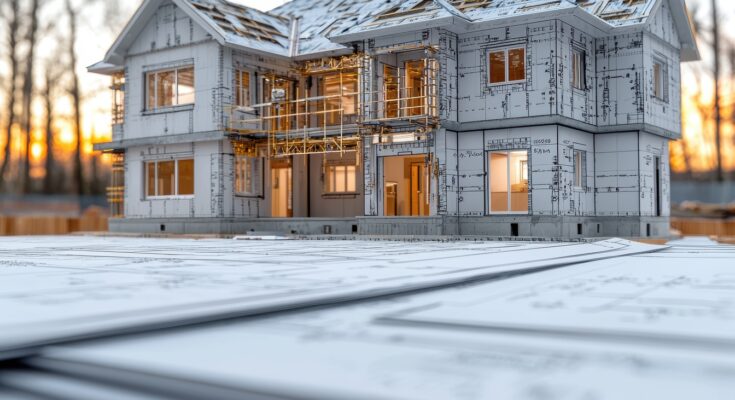Building on your land, whether it’s a house lot, acreage, or farm, obviously needs careful planning and preparation. Jamestown Estate Homes says turning vacant land into a productive asset requires advance planning to understand opportunities and challenges, creating plans that fit the land, maximizing its potential and avoiding costly mistakes.
Understand Zoning Restrictions and Permit Needs
Local zoning codes and land use regulations vary widely between municipalities. Research specific requirements in advance rather than assuming what’s allowed on a property. Ensure intended uses such as secondary dwellings, livestock, commercial facilities, recreational amenities, or rentals align with all zoning, setback, height, and permitted use specifications before finalizing designs and applying for required permits. This due diligence early on prevents frustration and enforcement issues later.
Thoroughly Assess the Land
The landscape itself should significantly influence development plans, so investigate details before designing projects. Survey boundary lines and topography to quantify usable space limitations like steep slopes, easements or waterways. Inventory existing assets that plans can incorporate, like quality soils, mature trees or access to utilities. Identify any protected habitats housing rare species needing special accommodation measures. Defining on-the-ground realities informs properly scaled projects matching the property’s natural gifts and constraints for long-term viability.
Accommodate Both Conservation and Development
Instead of framing land use as a choice between total preservation or intense development, thoughtfully balance both priorities through comprehensive master planning. Permanently conserve stream buffers, forests, wetlands and critical habitats while clustering buildings, drives, and cleared areas in sections suited for disturbance. Following this “development by design” approach concentrates infrastructure impacts while retaining the land’s ecological benefits and natural beauty.
Understand Multi-Generational Implications
Property transformations impact not just current owners but descendants as well, so evaluate long-term legacy goals early when assessing big changes. Weighing how upcoming generations will inherit outcomes stretches the planning horizon beyond short-term economics alone.
Construct Durable, Multi-Use Infrastructure
Maximizing returns on upfront infrastructure investments requires durable designs accommodating flexible uses over decades as needs shift. Choose resilient post-frame constructions allowing interior completion for varied purposes rather than customized structures difficult to modify later. Size gravel drives, conduit runs and utilities well beyond current requirements to enable scaling up. Initially utilize basic buildings for vehicles, storage or animals while reserving the option to add apartments or retail space eventually.
Plan Infrastructure in Phases
Since major construction projects often span years from initial ground-breaking to final finishes, use a phased master plan when installing infrastructure. Prioritize the most essential components like access roads, electrical and water lines to serve initial basic structures. Outline a timeline to systematically complete additional buildings, then circle back later to upgrade interiors as budget allows. This logical progression focuses resources on critical infrastructure before adding expensive but non-essential finishes. Starting modestly also provides flexibility to modify intended later uses as situations change. Follow this intentional roadmap in steps rather than trying to fully build out everything at once.
Conclusion
Meticulous upfront planning allows properly tailoring construction and land use plans to match both a property’s natural gifts and its constraints. Evaluating zoning limitations, surveying existing assets, balancing conservation priorities, considering multi-generational implications, and installing flexible infrastructure provides a comprehensive foundation to inform wise decision making before permanently changing the landscape. Taking time for thorough due diligence ensures upcoming build on your land projects unlock the property’s full potential while enriching enjoyment and value for generations rather than compromising it through short-sighted choices. Success for both current and future stewards is dependent upon careful and advanced planning that must be done before the project begins.




